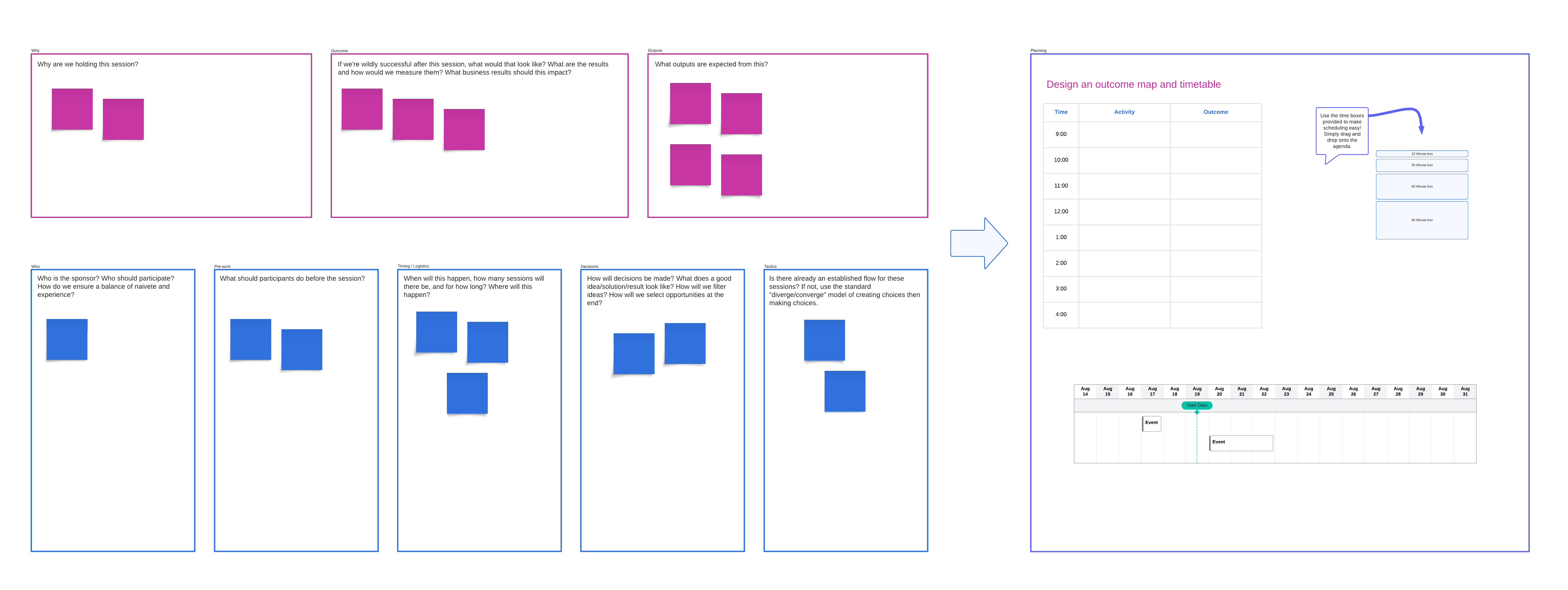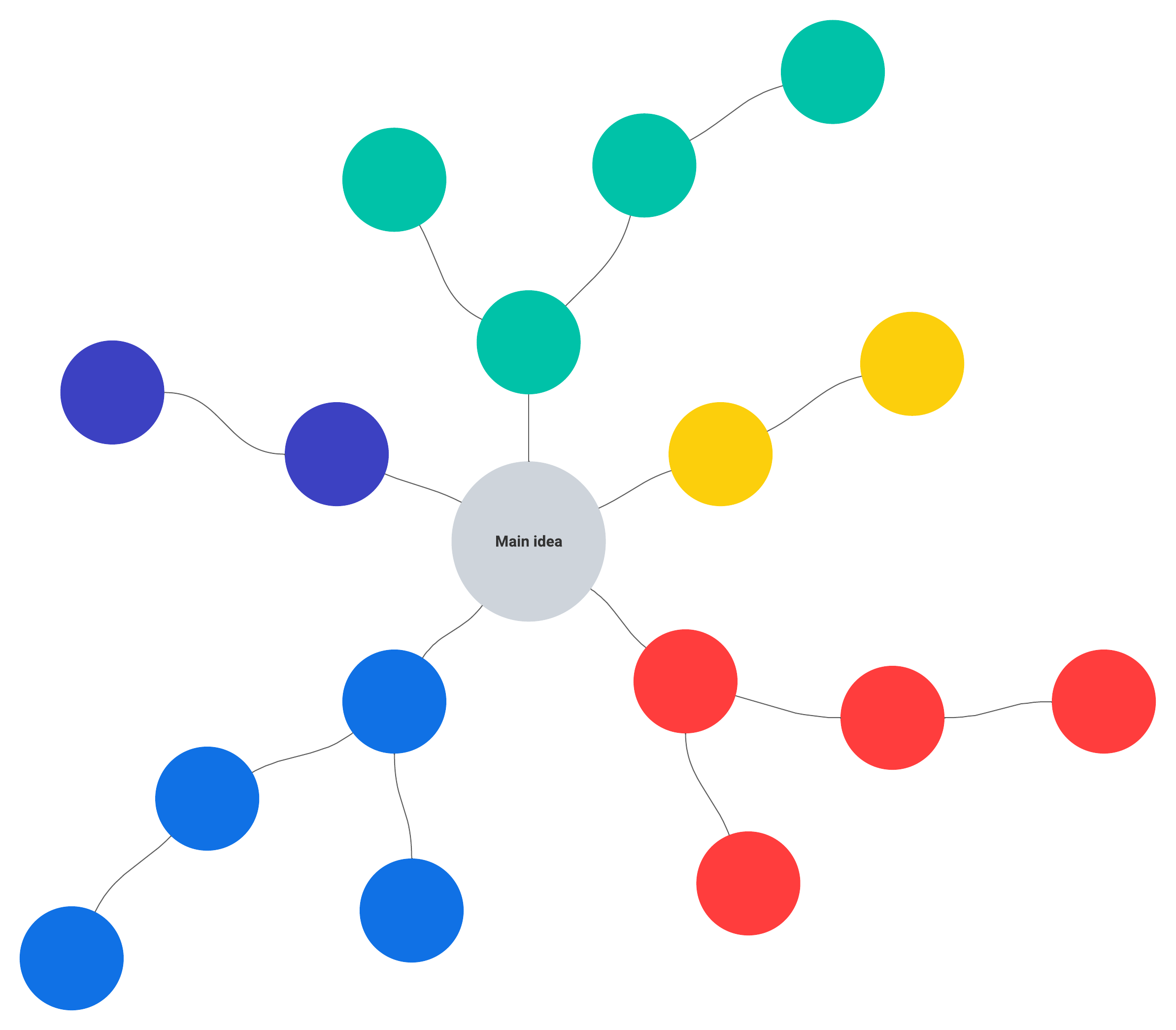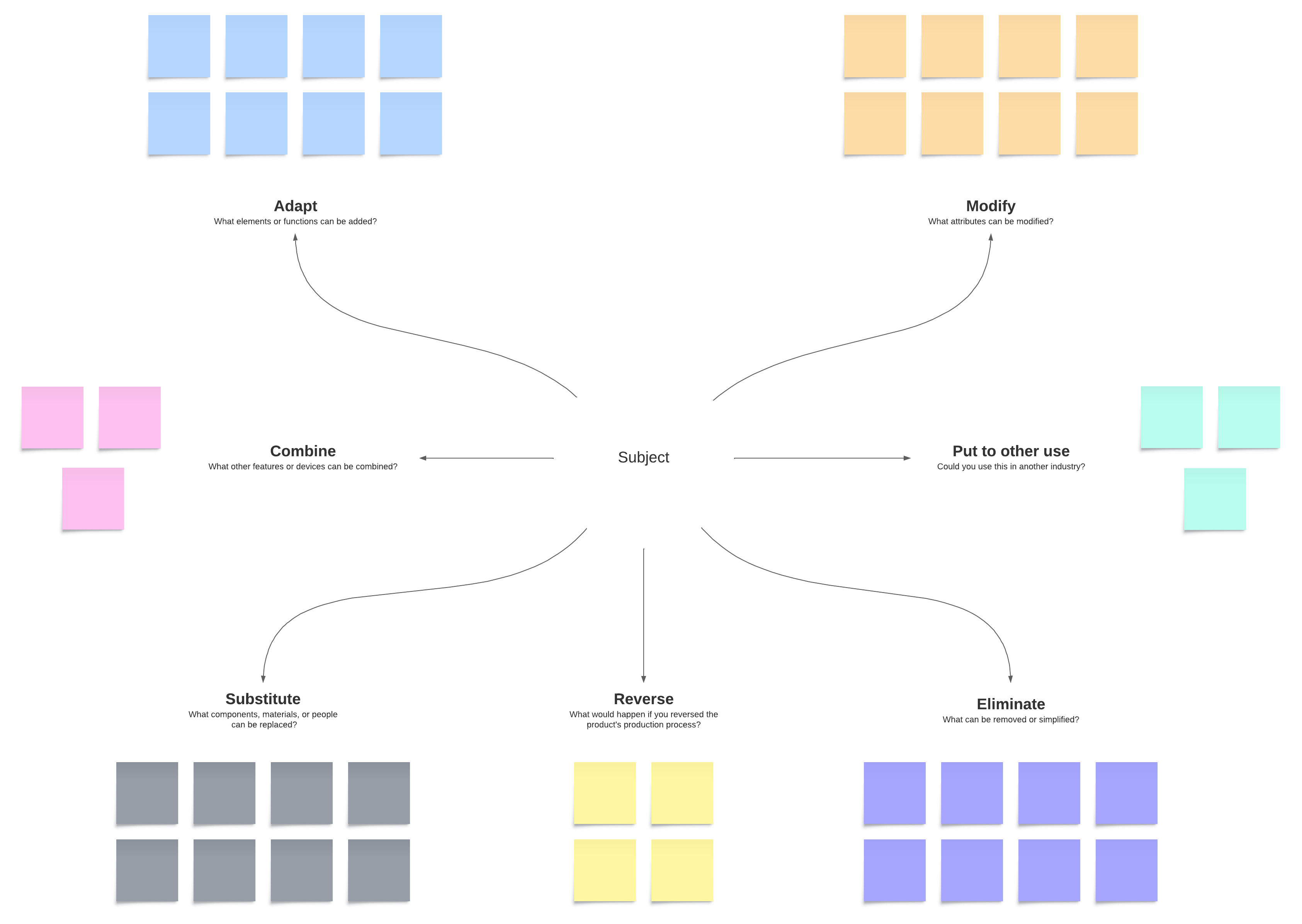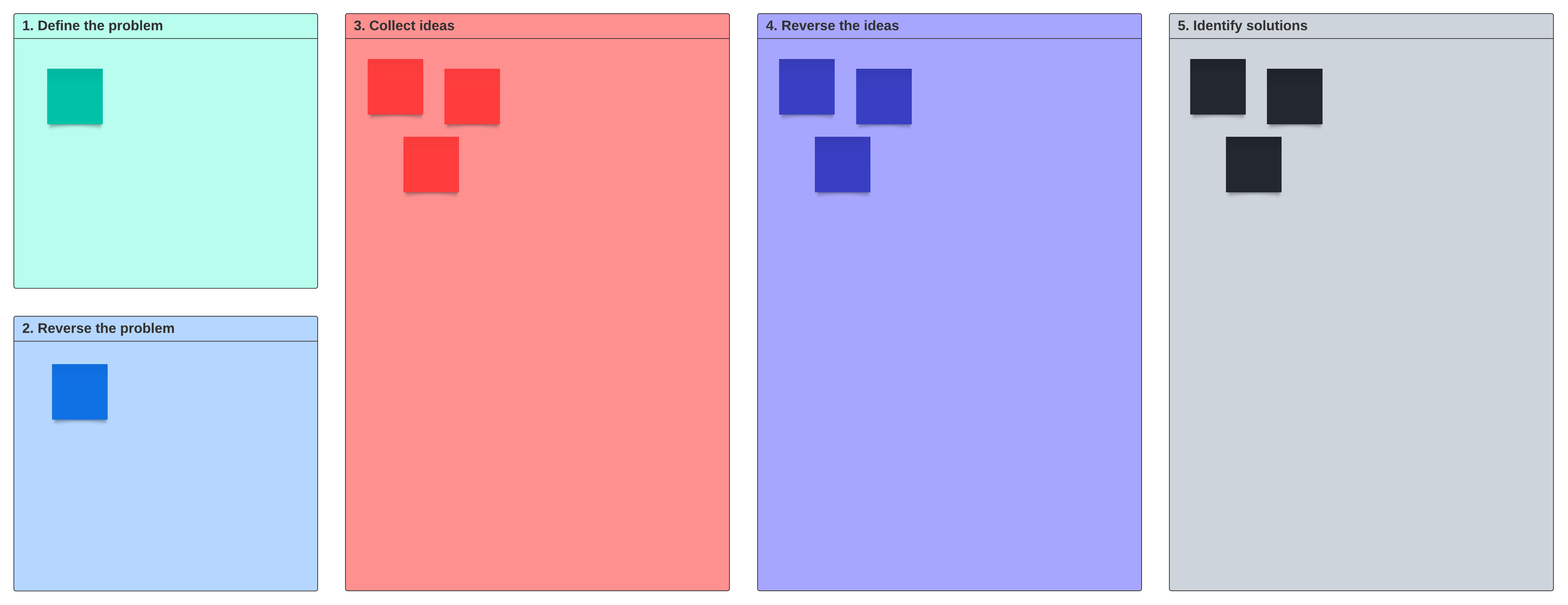You might be surprised to learn that you have about 6,000 thoughts per day. That’s a little more than six thoughts every minute, depending on how many hours you sleep at night.
With so many thoughts running through our heads all the time, you’d think that it’d easy to productively ideate every day. But brainstorming ideas that will help grow your business and keep you ahead of the competition is often challenging. And if you’re managing remote teams, it can be difficult to to come up with solid ideas in real time.
In this post we’ll explore ideation techniques and templates that will encourage collaboration and participation from all team members, no matter where they might be physically located.
What is ideation?
Simply put, ideation is the process of generating and communicating ideas. It is the third stage of the Design Thinking process. The goal of ideation is to come up with as many ideas as you can to address problems or to develop new products. An efficient ideation session can help people think of new products and services, marketing campaigns, innovative ways to streamline the supply chain, and more.
What is the ideation process?
Ideation is not necessarily linear. In fact, following a strict structure could hinder creativity. But there are guidelines and best practices that you might consider implementing to make your ideation sessions more productive.
- Create a safe, collaborative environment: To encourage participation, team members need to feel comfortable and free to propose ideas without judgement. With a hybrid or remote team, you might want to try some simple team-building activities or icebreakers to get the creative juices flowing and to help the team to feel more comfortable communicating.
- Define the problem you want to address: You can’t brainstorm ideas if you don’t understand what you need to accomplish. You’ll want to define and understand what the problem is, its underlying factors like customer needs, industry trends, budgets—any key pain points that keep customers from buying your products or hinder you in producing what your customers want.
- Generate ideas: Your goal is to generate as many ideas as you can. Prioritize quantity over quality. Nobody should feel embarrassed to share an idea. Encourage participants to think creatively, critically, analytically, and abstractly to see things from different points of view.
- Identify the best idea: Evaluate all of the ideas to find the most feasible solution to implement. Consider different ways to vote on the best suggestions.
- Prototype and test the idea: When a favorite idea is identified, create a prototype and test it to ensure it works before moving on to development and implementation.
Ideation techniques
There are many ways to generate ideas. It doesn’t matter which technique you use, just make sure that you establish rules to keep participants engaged and comfortable. For example:
- No idea is a bad idea
- The more ideas the better
- Document everything
- Expand and enhance other team members’ ideas
You can use the Lucidspark ideation strategy template to scope your project, plan meaningful ideation sessions, and promote active engagement from remote team members. After you have scoped your project and pinpointed a strategy, you can then decide which ideation techniques will work best for your team.

Brainwriting
In a traditional brainstorming session, participants share ideas vocally while somebody takes notes to capture the ideas. Brainwriting is a brainstorming technique in which participants write down their ideas on sticky notes. The ideas are distributed to other team members who read them and expand on them if they have anything to add. This can help introverted members of the team feel more comfortable sharing ideas.
To conduct a remote brainwriting session, simply write the problem on the board and let participants add ideas, comments, and suggestions within a specified time frame. This brainwriting template is a great place to start.

Mind mapping
A mind map can be used to represent your ideas and thoughts visually. The central idea is written down in the center of a board. Then, invite your team to add their thoughts, connecting them to the other ideas using lines and arrows.
Our mind map template can help remote teams visually organize their thoughts, retain information, and collaborate to find the best ideas.

SCAMPER
With this brainstorming technique, your team looks at a problem from seven different angles: substitue, combine, adapt, modify, put to other use, eliminate, reverse. If each team member comes up with at least seven different fixes or improvements for the same problem, you’ll have a large pool of ideas to work with.
- Substitute: Can you swap a component (a process, person, materials) for something else that might give you a better outcome?
- Combine: Can you combine resources, steps, procedures, or ideas to work more efficiently or to create something different entirely?
- Adapt: Is there a component, feature, or process that can be adjusted to improve your results?
- Modify: Is there something that needs to be added to or taken away from an existing component that will solve a specific problem?
- Put to other use: Are there elements of the product or feature that would work better if they were put somewhere else?
- Eliminate: Are there components that can be removed or reduced to improve a product or service?
- Reverse/ rearrange: Are there processes that can be rearranged to improve efficiency? Would reversing the process make sense?
You can share this SCAMPER template with your team to get started.

Reverse brainstorming
Sometimes it’s easier for people to identify a potential negative outcome than a successful one. This technique capitalizes on that. Rather than looking for solutions to a problem, it encourages you to look for ways to cause a problem or aggravate an existing problem. It may seem counterintuitive, but after you’ve identified possible issues, you’re better able to find creative ways to prevent those issues.
General steps for reverse brainstorming include:
- If you have an existing problem that you need to address, clearly identify it.
- Ask team members to write down ideas that could make the problem worse.
- Collect and review suggestions.
- Come up with ideas to solve the suggested potential problems.
- Review and evaluate to identify the best solution.
Use our reverse brainstorming template to spark your team’s creativity for finding and solving potential problems.

Find better solutions with Lucidspark
Lucidspark templates are perfect ideation tools to take suggestions from concepts to fully realized solutions. Each template is easily customizable to your use case. Because Lucidspark is a cloud-based virtual whiteboard, your team members can easily align to collaborate on the same board in real time, no matter where they are located.

Check out these idea templates and dozens more in our template gallery.
Browse nowAbout Lucidspark
Lucidspark, a cloud-based virtual whiteboard, is a core component of Lucid Software's Visual Collaboration Suite. This cutting-edge digital canvas brings teams together to brainstorm, collaborate, and consolidate collective thinking into actionable next steps—all in real time. Lucid is proud to serve top businesses around the world, including customers such as Google, GE, and NBC Universal, and 99% of the Fortune 500. Lucid partners with industry leaders, including Google, Atlassian, and Microsoft. Since its founding, Lucid has received numerous awards for its products, business, and workplace culture. For more information, visit lucidspark.com.
Related articles
Tips and tricks for facilitating ideation sessions in Lucidspark
Here is a set of features and practices you can use—in any combination—to get the most from your team’s brainstorming sessions.
7 tips for improving your brainstorming sessions
With a few must-haves and some basic guidelines, you’ll learn how to increase the effectiveness of your brainstorming meetings in no time.
What is a mind map?
A complete guide to understand mind mapping, how mind maps are often used, and steps to make a mind map of your own.

